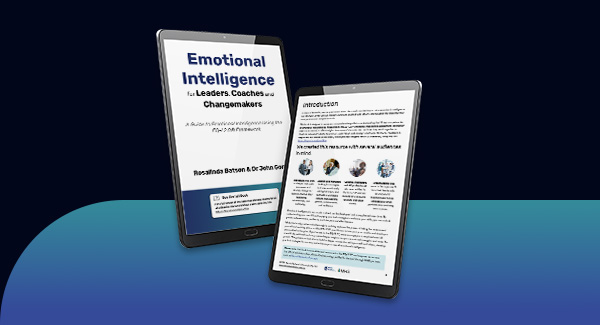Emotional Intelligence and Optimism

At the core of Emotional intelligence (EI) lies the ability to manage emotions effectively - both our own and those of others. Emotional intelligence involves understanding how emotions influence decision-making, social interactions, and relationships. Optimism, as a key emotional trait, enhances emotional intelligence by helping individuals stay resilient in the face of challenges. Optimism supports self-awareness, empathy, and social skills, driving better personal and professional outcomes.
In essence, optimism helps individuals cope with life's challenges by focusing on solutions rather than problems. This mindset enables leaders and employees alike to adapt and thrive, even in demanding environments.
What is Optimism and Why is it Important?
Optimism is the belief that positive outcomes are more likely than negative ones. It’s not about ignoring challenges or pretending everything is perfect; rather, it’s about maintaining a hopeful perspective and believing in the ability to overcome obstacles.
Research shows that optimism has a profound impact on both physical and mental well-being. Studies cited by Immaculata De Vivo and Daniel Lumera in The Biology of Kindness reveal that people with higher levels of optimism live longer, enjoy better health, and experience fewer age-related illnesses. Optimism is associated with lower risks of cardiovascular and metabolic diseases and improved immune function.
In the workplace, the benefits of optimism extend beyond health. Optimistic employees approach challenges with confidence, seeing problems as opportunities for growth. According to Martin Seligman, the founder of positive psychology, optimists tend to persevere through setbacks, making them particularly effective in roles that involve frequent rejection, such as sales. In his research on insurance salespeople, optimists sold 37% more policies and were less likely to quit than their pessimistic counterparts.
Optimism fosters a proactive mindset, encouraging employees to take initiative and pursue solutions with creativity and determination. This can lead to greater innovation and problem-solving within teams. Moreover, studies by Scheier and Carver show that optimistic individuals experience lower levels of stress, contributing to higher productivity and job satisfaction.
Optimism in Leadership
In leadership, optimism plays an essential role in shaping workplace culture. Optimistic leaders exude confidence in their teams, fostering an environment where employees feel motivated, engaged, and committed. Leaders with an optimistic outlook inspire trust and collaboration, helping teams navigate challenges with resilience.
Research by Avey, Avolio, and Luthans (2011) on psychological capital, which includes optimism, found that optimistic leaders boost employee engagement and job satisfaction. Employees working under optimistic leaders report higher levels of motivation and lower turnover rates, as they feel supported and empowered to succeed.
Balancing Optimism with Good Decision Making
While optimism is a powerful tool, it must be balanced with clear, rational decision-making. Research from the University of Bath shows that excessive optimism can lead to lower cognitive performance in areas like problem-solving, reasoning, and memory.
Dr. Chris Dawson, from the University’s School of Management, notes, "Unrealistic optimism is one of the most pervasive human traits. People consistently underestimate the negative and accentuate the positive, which can lead to poor decision-making."
The key is not to become more pessimistic, but to balance optimism with other emotional intelligence capabilities like Problem Solving, Reality Testing and Impulse Control. Leaders who cultivate these competencies are better equipped to make balanced, effective decisions, even when facing adversity.
What Does Optimism Look and Sound Like in the Workplace?
Optimism manifests in both behaviours and communication, shaping how leaders and employees approach tasks, interact with colleagues, and respond to challenges.
In behaviour, optimistic leaders are calm and reassuring during difficult times. They view setbacks as opportunities to learn and grow, focusing on solutions and the long-term vision. For example, when a project doesn’t go as planned, an optimistic leader might say, “This didn’t work out as expected, but here’s what we can learn and improve for next time.”
In communication, optimistic leaders use empowering language that instils confidence. They focus on possibilities, using phrases like, “We’ve faced challenges before and come out stronger,” or “I believe in our ability to overcome this.” This forward-looking communication keeps the team motivated and focused on progress.
By consistently reinforcing a positive outlook, optimistic leaders foster resilience within their teams, encouraging creative problem-solving and a growth mindset.
How Optimistic Are You?
To assess your levels of optimism, you can ask yourself the following questions:
- How do I respond when faced with setbacks? Do I focus on solutions or dwell on the negatives?
- Am I confident in my team's ability to succeed, and do I communicate this belief to them?
- Do I make an effort to highlight and celebrate successes with my team, even during difficult times?
- When discussing challenges, do I use constructive, solution-focused language?
- Do I view feedback as an opportunity for improvement, or do I take it as a personal or team failure?
- In stressful situations, do I remain calm and focus on long-term goals?
- How often do I ask my team for input on overcoming challenges, and do I believe we will find a way?
- How quickly do I adapt and pivot when things don’t go according to plan?
- Do I self-reflect to evaluate how my mindset impacts my leadership and team?
- Do I communicate future goals with optimism and confidence, even when there are hurdles along the way?
Reflecting on these questions can provide insights into your optimism levels and areas for potential improvement. Remember that optimism is a skill that can be developed and enhanced over time with self-awareness and practice.
Developing Optimism
Developing optimism requires conscious effort. Here are some practical exercises you can try to enhance your assertiveness skills:
Visualise success:
A visualisation strategy can be a powerful tool to envision success and motivate yourself and your team. Here's a simple technique:
- Imagine yourself in a future where you've achieved your desired goals. This could be a specific event, like giving a successful presentation, or a more general scenario, like celebrating a major accomplishment with your team.
- Make the scene as detailed as possible. What do you see, hear, smell, taste, and feel? The more sensory details you include, the more immersive the experience will be.
- Imagine the feelings of joy, satisfaction, and accomplishment you'll experience when you achieve your goals.
- Practice this visualisation technique regularly, especially before important meetings, presentations, or deadlines.
This technique can help you stay focused, motivated, and confident as you work towards your goals. By visualising success, you're essentially programming your mind to believe it's possible, which can increase your chances of achieving it.
Practice gratitude
Take a moment daily to reflect on things you're grateful for. This simple practice shifts your focus toward positivity and fosters a mindset of abundance.
- At the end of each day, write down three things you're grateful for. This can be anything from personal achievements to small acts of kindness from others.
- Alternatively, simply close your eyes and spend a few minutes focusing on the things you're grateful for.
Challenge negative thoughts
Cognitive restructuring is a technique used to challenge and change negative thought patterns. It involves identifying negative thoughts, questioning their validity, and replacing them with more positive and realistic ones. Essentially, cognitive restructuring helps you shift your perspective from a negative one to a more positive one. This can be beneficial for improving your mood, reducing stress, and enhancing your overall well-being.
Follow these steps:
- When you notice you are having negative thoughts take the time to consciously recognise what they are. For example, perhaps you have a large project deadline looming and you notice yourself thinking “I’ll never finish this on time. I’m a failure.”
- Next, question the validity of these thoughts. Ask yourself if these thoughts are based on facts or assumptions. Continuing with the same example, you might ask yourself, “Is this really true? Have I ever failed to complete a project before? What evidence do I have to support this belief?”
- Finally, replace negative thoughts with more realistic and positive affirmations. For example, "This project is challenging, but I've successfully completed similar projects in the past. I can break down this large project into smaller, more manageable tasks and stay organised." By challenging the negative thought and replacing it with a more positive and realistic one, you are more likely to feel motivated and confident in your ability to complete the project.
How Neural Networks Can Help You Develop Your Optimism
At Neural Networks, we’ve helped individuals and organizations build emotional intelligence and optimism since 2000. As one of Australia’s leading professional development providers, we deliver innovative learning development programs in emotional intelligence, leadership, sales, customer service and workplace culture.
Sign up for the Neural Networks Newsletter
Join our mailing list to receive information on leadership, sales, and emotional intelligence.

 +61 9555 7955
+61 9555 7955